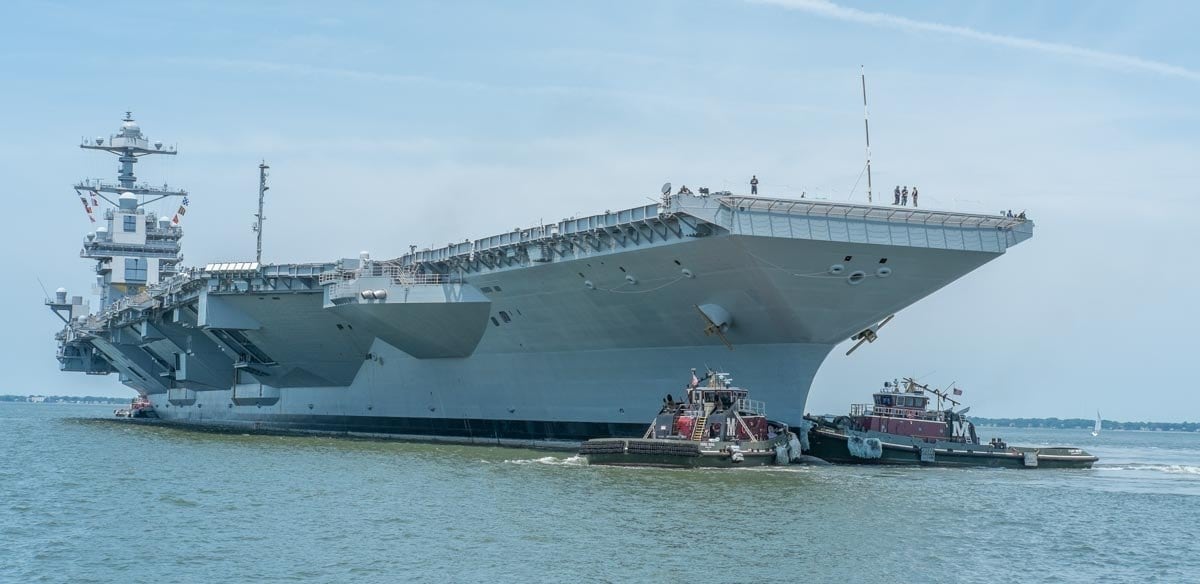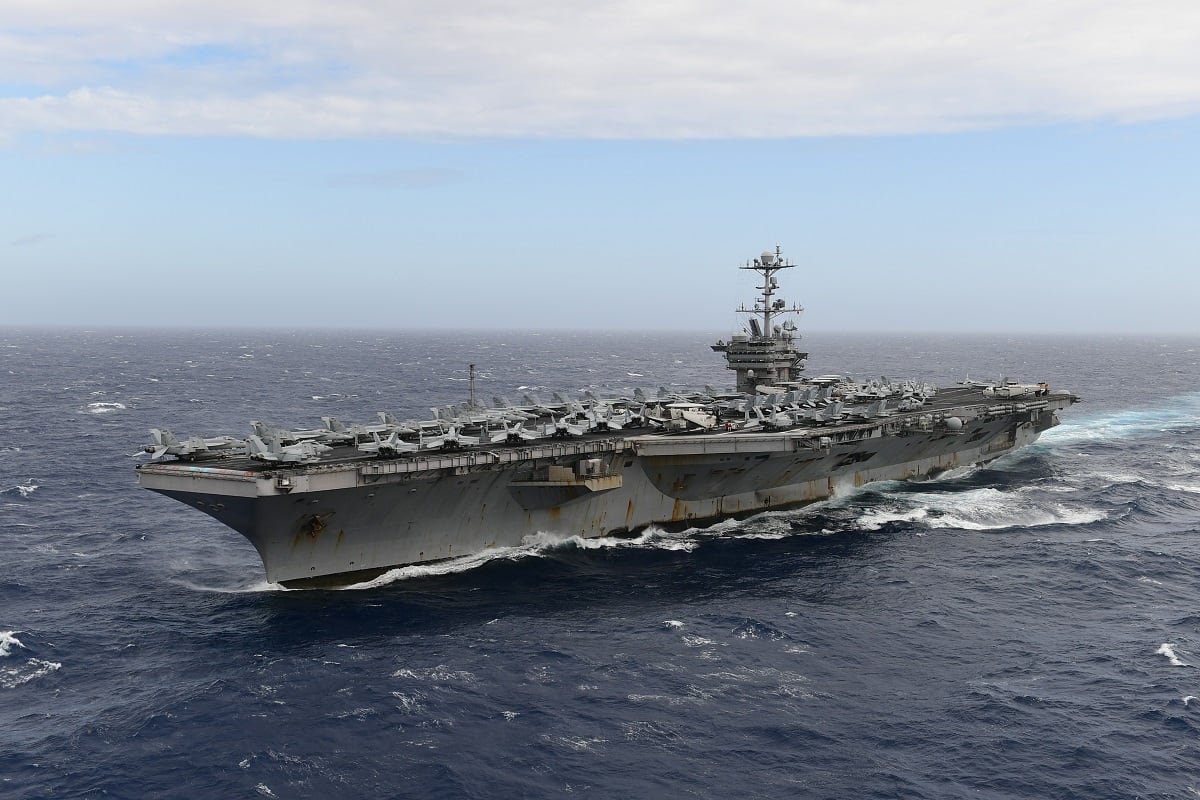Navy Secretary Richard Spencer defended Wednesday a plan to retire the aircraft carrier Harry S. Truman early.
It’s a move officials say could save the sea service $30 billion over 25 years but it’s sparked bipartisan outrage on Capitol Hill.
Spencer’s comments regarding plans to cancel the mid-life refueling for the Nimitz-class carrier scheduled for 2024 came during a House Armed Services Committee hearing on the Navy’s budget request for Fiscal Year 2020.
Focusing on buying two Ford-class carriers and forgoing Truman’s refueling would allow the Navy to focus on next-generation capabilities, Spencer said.
Ford-class carriers will enjoy a higher sortie launch rate, require fewer sailors and be easier to maintain, Spencer told lawmakers.
He pointed to the oil, trucking and aviation industries, where old equipment routinely gets ditched for new gear.
“When, in fact, a new platform is presented to anyone who’s modernizing … people abandon assets to make the case to move toward more effective, more efficient, and in our case, more lethal platforms,” Spencer said.
RELATED
He acknowledged the hesitance that lawmakers in the House and Senate have with junking Truman.
“Walking away from 25 years, abandoning an asset, is not an easy decision,” Spencer said.
“But as far as the modernization argument, we believe it was a way to put the statement forward that we can take those monies and invest in Force 2.0,” he added.
Rep. Mac Thornberry, the ranking member of the committee, expressed skepticism about Truman’s early retirement.
“Prevailing opinion on the committee is to refuel the carrier,” the Texas Republican told Spencer and Chief of Naval Operations Adm. John Richardson.
The Navy’s top officer told Thornberry that the sea service continues to study the Nimitz class of carriers, weighing it against the next generation flattops, and said investments would be adjusted if lawmakers restored funding for the carrier’s overhaul.
RELATED

Retiring the Truman early has sparked concern across Capitol Hill.
Oklahoma Republican Sen. James Inhofe, who chairs the Senate Armed Services Committee, said in March that he was “disturbed by the idea that we will be taking Truman out of the system,” and raised concerns about carrier numbers, Defense News reported.
The Navy is working to complete a new force structure assessment, or FSA, which is used to examine fleet composition and its future needs.
According to the Navy’s most recent shipbuilding plan, decommissioning the Truman early could cut the number of carriers to nine by 2046, three less than the current 12-carrier requirement, Defense News reported.
Rep. Joe Courtney, chairman of the House’s Seapower and Projection Forces Subcommittee, told Defense News that there was “zero” chance that his committee would authorize the Truman plan this year.
“The Truman is only about 25 years old, which (in terms of) an aircraft carrier is actually pretty young,” the Connecticut Democrat told Defense news.
“We just approved a two-carrier block buy in September. So, to do that and then reduce the size of the carrier fleet seems like a contradictory policy.”
RELATED

During a discussion about posture and presence worldwide and the size of the fleet, Marine Corps Commandant Gen. Robert Neller told lawmakers that “there are about 10 capabilities that the Department of Defense has that are never met for the (combatant commanders).”
In other words, COCOMS regularly do not get all the assets they request.
“They’re unconstrained in their requests,” Neller said. “But naval forces, submarines, cruiser destroyers, carrier strike groups, amphibious ready groups, our (Marine Expeditionary Units), are always deficient.”
Rep. Elaine Luria, a retired Navy commander and first-term Virginia Democrat, questioned why the Navy was phasing out so many vessels when the deterrence provided by a gray hull is more needed than ever, particularly in the Pacific.
“We’re planning to decommission six cruisers, no investment in a ship to shore connector, decommission an aircraft carrier halfway through its life cycle and decommission 11 minesweepers, yet we’re doing everything we can to meet (combatant commander requests)?” she asked.
“Yet we’re voluntarily reducing our capability in the number of ships we have in the next several years?’
Spencer said it all comes down to cost.
“It might not be economically worthwhile with the risk balance to keep those cruisers going versus where those dollars can be placed for more effective deterrence in some other asset,” he said.
RELATED

Military leaders also discussed with lawmakers the effects of climate change on installations.
Spencer said the Navy has completed inventories concerning climate change at all bases.
“It’s not just rising water,” he said. “It’s drough. It’s fire. It’s any weather-induced impact.”
Officials are studying “diking around Norfolk for rising waters,” and assessing wildfire control efforts at Marine Corps Base Camp Pendleton, Spencer added.
As the Marines wait on supplemental disaster appropriations to fund $3.1 billion in repairs needed to fix Camp Lejeune in the wake of September’s Hurricane Florence, Neller warned that delaying repairs could threaten the training and retention of troops.
“We expect our folks when they forward deploy to operate in austere conditions,” Neller said.
“We don’t expect them to operate in that environment in their home station.”
Geoff is the managing editor of Military Times, but he still loves writing stories. He covered Iraq and Afghanistan extensively and was a reporter at the Chicago Tribune. He welcomes any and all kinds of tips at geoffz@militarytimes.com.
